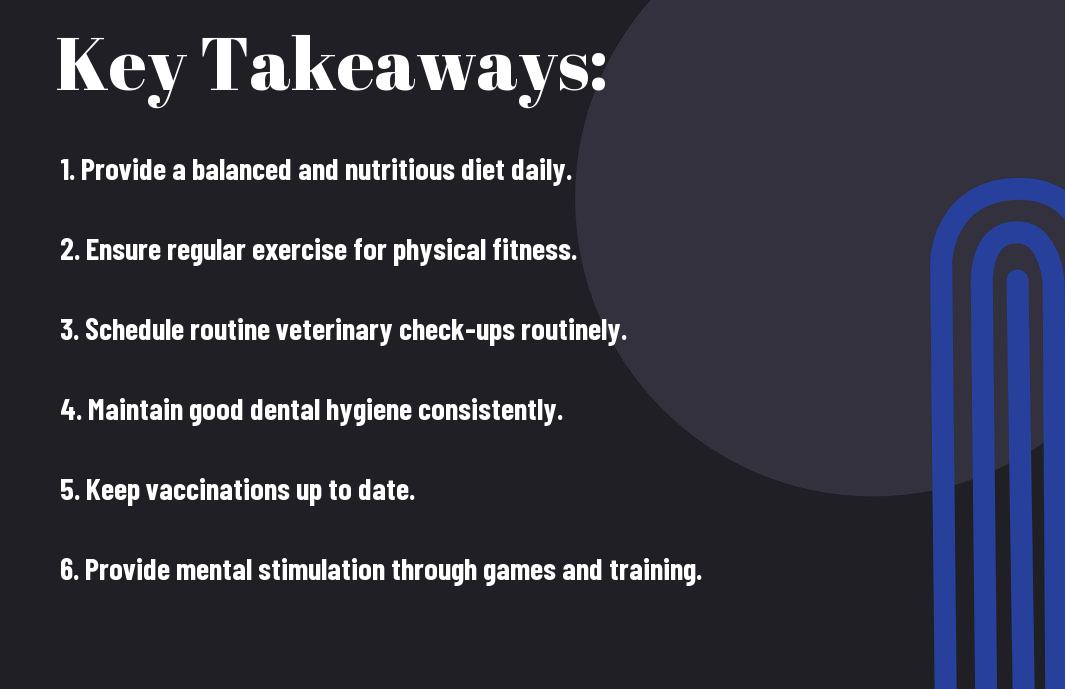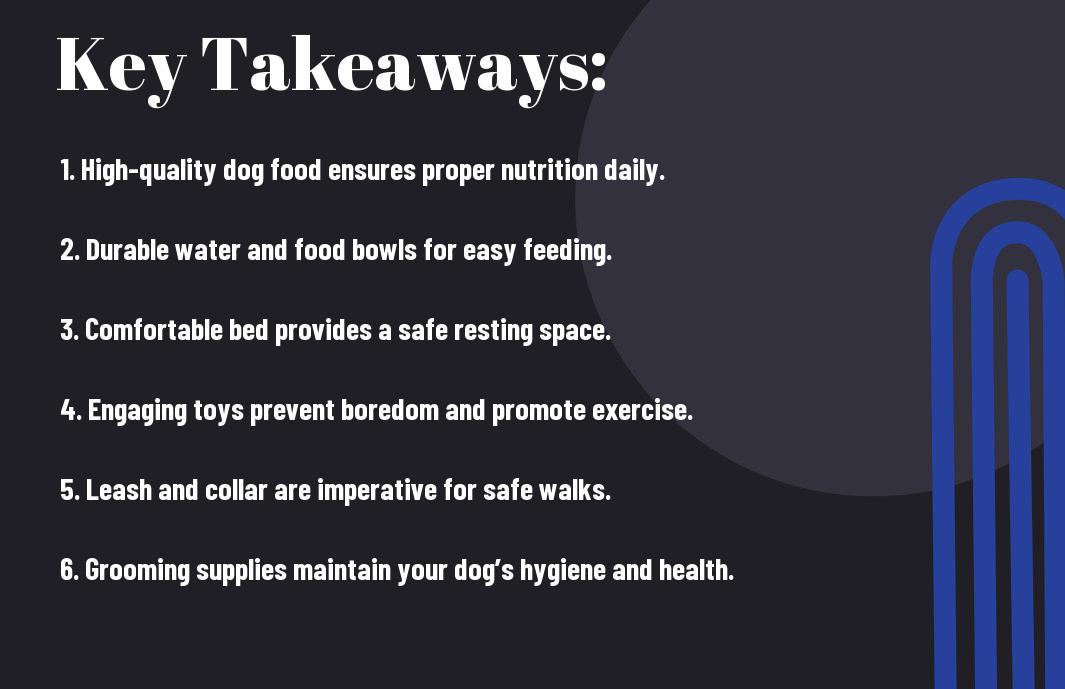Calm and confident handling can make all the difference when it comes to keeping your horse relaxed during a vet visit. Your horse’s well-being is at stake, and a stressed-out horse can make the experience more difficult for everyone involved. By preparing your horse beforehand and creating a calm environment, you can help ensure a smoother and more successful vet visit. Here are some tips to help you keep your horse calm and collected during this important appointment.

Understanding Your Horse’s Behavior
Identifying Stress Triggers
A crucial step in preparing your horse for a vet visit is understanding what triggers stress in your horse. By identifying these stress triggers, you can take proactive steps to minimize their impact and keep your horse calm during the vet visit. Common stress triggers for horses include loud noises, unfamiliar environments, being separated from other horses, and perceived threats.
Recognizing Body Language Cues
On your horse’s visit, it’s important to pay close attention to your horse’s body language cues to gauge their emotional state. Signs of stress in horses can include pinned ears, swishing tail, raised head, pacing, or even biting. By recognizing these cues early on, you can address your horse’s anxiety and help them feel more comfortable during the vet examination.
Body language cues are crucial indicators of your horse’s emotional well-being and can help you anticipate their reactions in various situations. By understanding your horse’s body language, you can build a stronger bond and create a more positive experience during vet visits.
Preparing Your Horse for the Vet Visit
It’s important to adequately prepare your horse for a vet visit to ensure a smooth and stress-free experience for both of you. By taking the time to desensitize your horse to typical veterinary procedures and clinic environments, you can help reduce anxiety and promote a positive outcome.
Gradual Exposure to Veterinary Equipment
Little by little, introduce your horse to common veterinary tools and equipment such as stethoscopes, thermometers, and syringes. Start by allowing your horse to see and sniff the items from a distance before gradually moving closer. Reward your horse for calm behavior to create positive associations with the equipment.
Desensitizing Your Horse to Touch and Handling
For desensitizing your horse to touch and handling, gently touch your horse all over its body, including sensitive areas like the ears, legs, and belly. Use a soft brush or your hands, progressing to firmer touches. This will help your horse become more comfortable with being touched during a veterinary exam.
A calm and relaxed horse will make the vet’s job easier and help ensure a thorough examination. Consistent and patient desensitization training can go a long way in preparing your horse for the vet’s touch and handling during the visit.
Acclimating Your Horse to the Sights and Sounds of the Vet Clinic
Desensitizing your horse to the sights and sounds of the vet clinic involves exposing your horse to various stimuli it may encounter during the visit. This can include loud noises, unfamiliar smells, other animals, and clinic staff in uniform. By gradually exposing your horse to these elements in a controlled environment, you can help reduce its anxiety and fear.
To further prepare your horse, consider practicing loading and unloading from a trailer if needed for the visit. Familiarize your horse with the travel process to the clinic to minimize stress on the day of the appointment. Additionally, bringing your horse’s favorite treats or toys can offer comfort and distraction during the visit.

Creating a Calming Environment
Minimizing Noise and Distractions
Keep in mind that horses are highly sensitive animals, so it’s important to minimize any loud noises or sudden movements that could startle them. Clearly communicate with the staff at the veterinary clinic to ensure that the environment is as peaceful as possible for your horse. This can help reduce their stress levels and keep them calm during the visit.
Providing a Familiar and Comforting Space
Creating a familiar environment can help your horse feel more at ease during the vet visit. Creating a space with their own bedding or favorite blankets can provide a sense of security. For instance, having familiar smells and objects around can help reduce your horse’s anxiety and make the experience less stressful for them.
Using Calming Aids such as Pheromones and Music
When creating a calming environment for your horse, consider incorporating calming aids such as pheromone diffusers or soothing music. These tools can help create a relaxing atmosphere and minimize stress for your horse during the vet visit. Speak with your vet about the best options for your horse’s particular needs.

Tips for Reducing Your Horse’s Stress Levels
Your horse’s stress levels can significantly affect their behavior during vet visits. To help keep them calm and relaxed, consider the following tips:
- Maintaining a Consistent Routine: Keeping a consistent daily schedule for your horse can help reduce anxiety and stress levels. Ensure your horse is fed, exercised, and groomed at regular times each day to provide them with a sense of stability.
- Providing Mental Stimulation and Exercise: Engaging your horse in mental stimulation activities and regular exercise can help channel their energy in a positive way and reduce anxiety.
- Using Positive Reinforcement Training Techniques: Implementing positive reinforcement techniques can help your horse associate vet visits with positive experiences, leading to a calmer demeanor during appointments.
Maintaining a Consistent Routine
One way to help reduce your horse’s stress levels is by maintaining a consistent daily routine. Your horse thrives on predictability, so sticking to a regular schedule can help them feel secure and less anxious. Knowing what to expect each day can provide your horse with a sense of stability and comfort.
Providing Mental Stimulation and Exercise
On top of a consistent routine, mental stimulation and regular exercise are crucial for keeping your horse calm and content. It’s imperative to provide opportunities for your horse to engage in activities that challenge their mind and body, such as puzzle feeders, trail rides, or ground training exercises. It can help prevent boredom and negative behaviors that may arise from pent-up energy or frustration.
It’s important to remember that your horse’s mental well-being is just as significant as their physical health. By incorporating mental stimulation and exercise into your horse’s daily routine, you can help them stay mentally sharp and emotionally balanced, contributing to a more relaxed and cooperative attitude during vet visits and beyond.
Using Positive Reinforcement Training Techniques
While preparing your horse for a vet visit, consider using positive reinforcement training techniques to create a positive association with the experience. By rewarding your horse with treats, praise, or favorite activities during and after vet visits, you can help them feel more comfortable and less stressed in the veterinary setting. This approach can build trust and confidence in your horse and make future vet visits less daunting for them.
Tips: Be patient and consistent with your training efforts, and always end on a positive note to reinforce good behavior. Remember that every small step forward counts towards building a more positive and stress-free vet visit experience for your horse.
Factors to Consider When Preparing for a Vet Visit
Not all vet visits are the same, and there are several factors to consider when preparing for one. By taking these factors into account, you can help keep your horse calm and make the experience less stressful for both of you.
Your Horse’s Age, Breed, and Health Status
If you have a young or elderly horse, they may require special attention and care during the vet visit. Similarly, certain breeds may have specific health considerations that your vet needs to be aware of. Knowing your horse’s health status will also help the vet in providing the best possible care.
The Type of Veterinary Procedure or Examination
Visit your veterinarian will be performing a routine check-up, vaccinations, or a more invasive procedure, such as teeth floating or lameness evaluation, the type of procedure will impact how you prepare your horse. This is important to consider in order to minimize stress and ensure a smooth visit.
This is especially crucial if your horse has had negative experiences with similar procedures in the past, as they may be more anxious or resistant. By understanding the nature of the procedure, you can take steps to help your horse feel more comfortable and cooperative.
The Role of Owner-Horse Bonding in Reducing Stress
Procedure familiar and trusted person can significantly reduce your horse’s stress levels during a vet visit. You play a crucial role in calming your horse and making them feel safe and secure in what can be a stressful situation.
Breed bonding time with your horse on a regular basis can help strengthen this connection and build trust. This trust will not only benefit your horse during vet visits but also in various other situations, creating a positive and harmonious relationship between you and your horse.

How to Handle Common Challenges During a Vet Visit
Dealing with Fear or Aggression
Unlike humans, horses may exhibit fear or aggression when faced with a vet visit. This can be challenging, but it’s crucial to remain calm and composed. Start by approaching your horse with confidence and assertiveness, reassuring them with your presence. If your horse becomes aggressive, do not retaliate but instead give them space and time to calm down. Utilize calming techniques such as deep breathing to help both you and your horse relax.
Managing Your Horse’s Anxiety or Panic
Common challenges during a vet visit include managing your horse’s anxiety or panic. If your horse starts to show signs of nervousness, such as pacing or sweating, it’s crucial to address the situation promptly. Offer familiar objects like a favorite blanket or provide a soothing voice to comfort your horse. Remember to remain patient and reassuring throughout the visit to help alleviate any anxiety.
Handle your horse with gentleness and calmness to prevent escalating their anxiety. By acknowledging your horse’s feelings and responding appropriately, you can help them feel more secure and at ease during the vet visit.
Coping with Unexpected Setbacks or Delays
Assuming everything goes smoothly during the vet visit may lead to unexpected setbacks or delays. It’s important to be prepared for such situations and remain flexible in your plans. If there are delays, communicate openly with the vet and staff about the situation. Keep your horse comfortable and well-attended to during any waiting periods.
Plus, it’s crucial to stay positive and patient even if the visit does not go as planned. Your attitude and composure can greatly influence your horse’s reaction and overall experience during the vet visit.
To wrap up
The key to keeping your horse calm during a vet visit is preparation. By desensitizing your horse to common procedures, organizing your equipment ahead of time, and maintaining a calm and confident demeanor, you can help reduce your horse’s stress and anxiety. Remember to remain patient and understanding, as your horse can pick up on your emotions. By creating a positive and calm environment, you can help ensure a smooth and successful vet visit for you and your horse.
Q: Why is it important to keep my horse calm during a vet visit?
A: Keeping your horse calm during a vet visit is important to ensure the safety of both your horse and the veterinary staff. A calm horse is easier to examine and treat, reducing the risk of injury to all involved.
Q: How can I prepare my horse for a vet visit to help keep them calm?
A: You can prepare your horse for a vet visit by desensitizing them to common veterinary procedures, such as handling their ears and feet, and practicing loading and unloading from a trailer beforehand.
Q: Should I inform my vet about any behaviors or triggers that may cause my horse stress?
A: Yes, it is important to inform your vet about any behaviors or triggers that may cause your horse stress, as this information can help them tailor their approach to keep your horse calm during the visit.
Q: Are there any calming techniques I can use during a vet visit?
A: Yes, you can use techniques such as deep breathing, gentle grooming, and offering treats or distractions to help keep your horse calm during a vet visit.
Q: What should I do if my horse becomes anxious or agitated during the vet visit?
A: If your horse becomes anxious or agitated during the vet visit, stay calm yourself and speak soothingly to your horse. You can also ask the vet for a break to allow your horse to relax before continuing with the examination or treatment.










